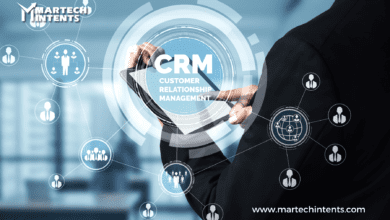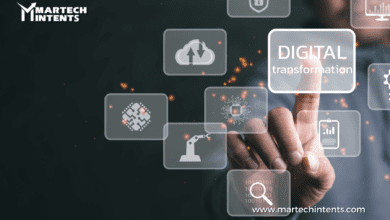A Step-by-Step Guide to Implementing Marketing Automation in Your MarTech Stack

Introduction: Marketing Automation
In the realm of modern marketing, efficiency, and personalization are paramount. Marketing Automation (MA) has emerged as a game-changing solution, allowing businesses to streamline processes, enhance customer engagement, and drive growth.
Integrating Marketing Automation into your MarTech stack can be a transformative endeavor, but it requires careful planning and execution.
In this guide, we’ll walk you through a comprehensive step-by-step process for successfully implementing Marketing Automation in your MarTech ecosystem.
Align Marketing Automation with Business Goals
Before diving into implementation, it’s crucial to align Marketing Automation with your business goals.
Clearly define what you aim to achieve through MA, whether it’s lead generation, nurturing, customer retention, or cross-selling.
This alignment ensures that your MA strategy contributes directly to your overarching business objectives.
Assess Your Current MarTech Stack
Evaluate your existing MarTech stack to identify gaps and opportunities for integration with Marketing Automation.
Understand how MA will complement your current tools, such as CRM, email marketing, and analytics platforms. Seamless integration is key to maximizing the value of your Marketing Automation efforts.
Choose the Right Marketing Automation Platform
Selecting the appropriate Marketing Automation platform is a pivotal decision. Research and compare different platforms based on features, scalability, ease of use, and compatibility with your existing stack.
Consider factors like email automation, lead scoring, workflow automation, and reporting capabilities. Choose a platform that aligns with your business needs and supports your long-term growth.
Define Customer Journeys and Workflows
Map out your customer journeys and design workflows that reflect the various touchpoints and interactions your customers have with your brand.
Define triggers, actions, and conditions for each stage of the journey. These automated workflows will guide your audience through a personalized and engaging experience.
Integrate Data Sources
Smooth data integration is fundamental for successful Marketing Automation. Ensure that your Marketing Automation platform seamlessly integrates with your CRM, e-commerce, and other data sources.
This integration enables the exchange of valuable customer information, enabling you to deliver targeted and relevant messages.
Segment and Personalize
Effective Marketing Automation hinges on precise audience segmentation and personalized communication.
Utilize the data at your disposal to create segmented lists based on demographics, behavior, interests, and engagement history.
Craft tailored messages that resonate with each segment, enhancing the impact of your campaigns.
Develop and Test Campaigns
Create a variety of automated campaigns, such as welcome emails, lead nurturing sequences, abandoned cart reminders, and re-engagement campaigns.
Design compelling content that aligns with each campaign’s objectives. Prioritize A/B testing to optimize subject lines, messaging, visuals, and calls to action for maximum effectiveness.
Implement Lead Scoring
Implement a lead scoring system to identify and prioritize leads based on their engagement level and behavior.
Assign scores to different actions, such as email opens, website visits, and form submissions. This helps your sales team focus on leads that are most likely to convert, improving overall efficiency.
Monitor, Analyze, and Optimize
Regularly monitor the performance of your Marketing Automation campaigns using key performance indicators (KPIs) such as open rates, click-through rates, conversion rates, and revenue generated.
Leverage the insights gained to optimize your workflows, content, and strategies for continuous improvement.
Provide Ongoing Training and Support
Empower your team with the knowledge and skills to effectively utilize the Marketing Automation platform.
Provide comprehensive training and resources to ensure that your team can leverage the platform’s capabilities to the fullest extent.
Learn more about Choosing the Right Marketing Automation (MA) Platforms: A Step-by-Step Guide
Conclusion:
Implementing Marketing Automation in your MarTech stack has the potential to revolutionize your marketing efforts, enhance customer experiences, and drive business growth.
By aligning with your business goals, selecting the right platform, integrating data sources, developing personalized campaigns, and continuously monitoring and optimizing, you can harness the power of Marketing Automation to create meaningful connections with your audience and achieve remarkable results in today’s dynamic digital landscape.




